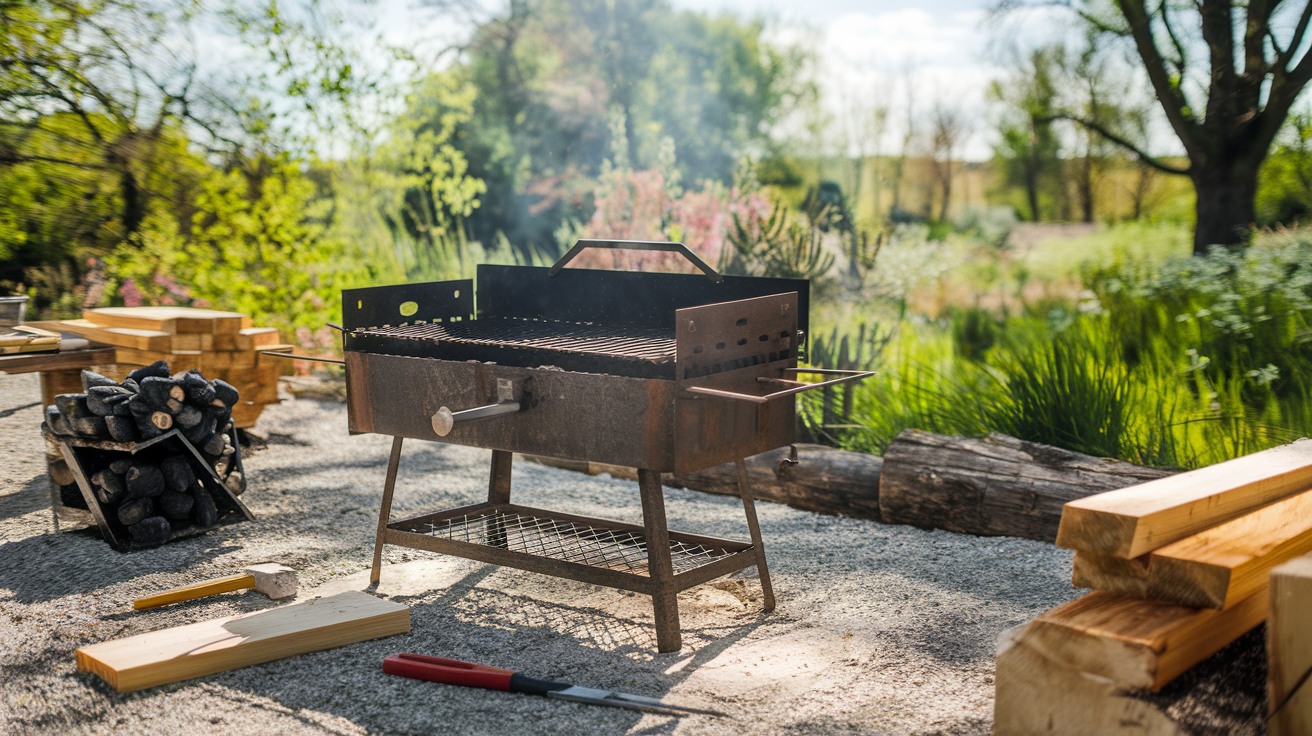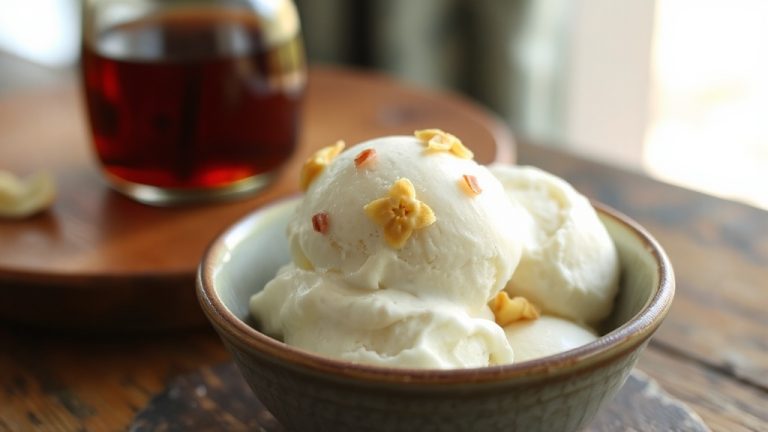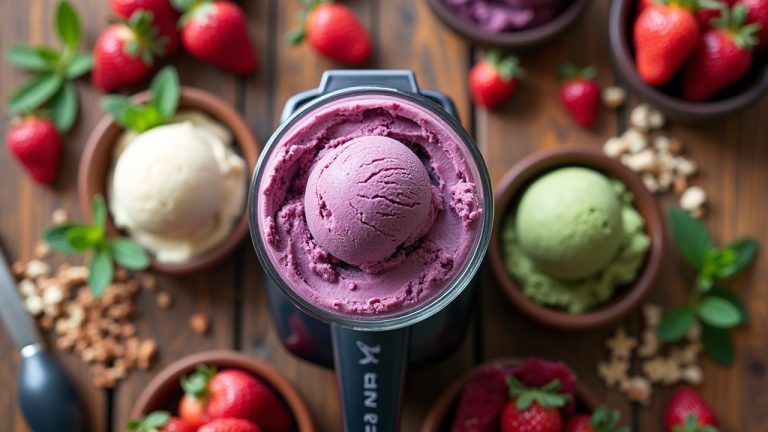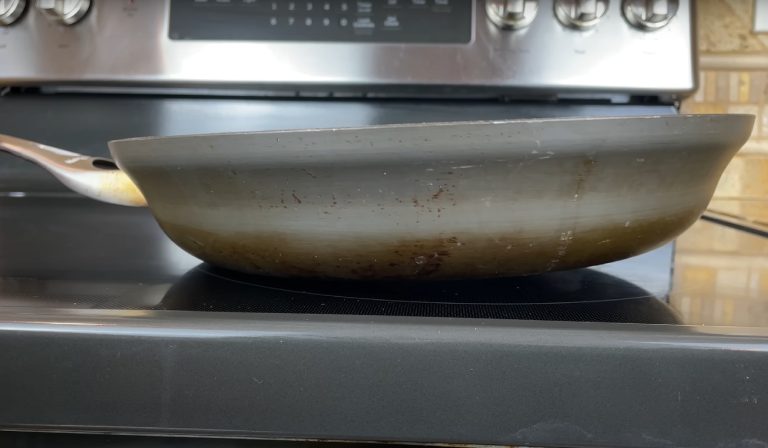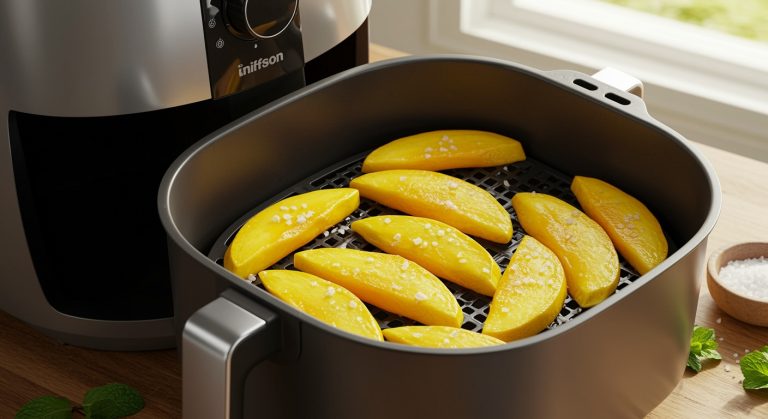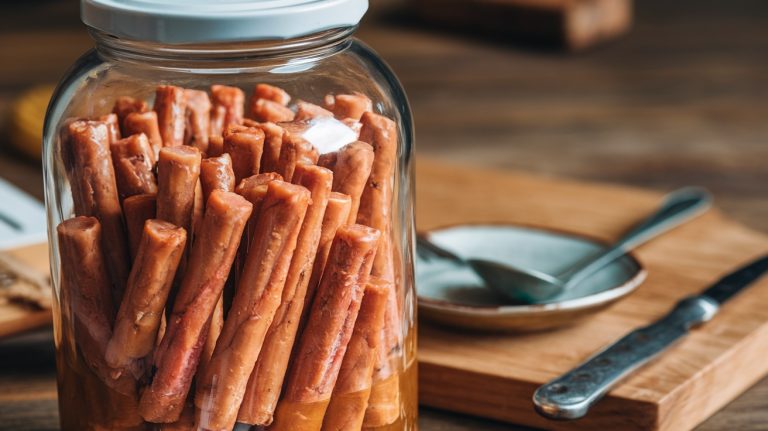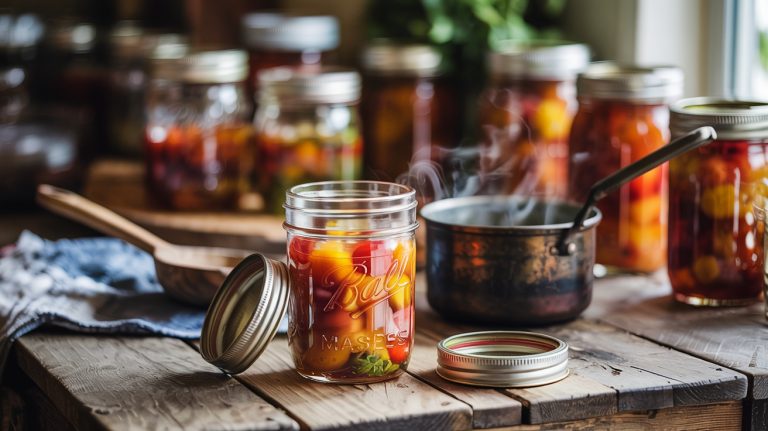How to Build a Wood Burning Grill: DIY Guide for BBQ Lovers
Building a wood-burning grill is a rewarding project that enhances your outdoor cooking. Start with a sturdy base using durable materials like 304 stainless steel.
Construct the grill with firebricks and incorporate adjustable cooking grates for versatility. Don’t forget ventilation for efficient combustion and a secure lid for indirect grilling.
Efficient fire-building involves proper kindling and log arrangements to create hot coals. Monitor temperatures for ideal cooking outcomes.
Remember to prioritize safety by placing the grill away from flammable items. There’s plenty more to discover about enhancing flavors and techniques, so let’s explore further.
Key Takeaways
- Choose durable materials like 304 stainless steel and heavy-duty steel for the grill’s construction to ensure longevity and resistance to outdoor elements.
- Design the grill with adjustable cooking heights and ventilation options for versatile cooking techniques and improved heat control.
- Incorporate a sturdy base and built-in wood storage to enhance functionality and aesthetics in your outdoor grilling area.
- Use efficient fire-building techniques with dry kindling and log arrangements to create a strong, sustainable fire for grilling.
- Monitor and control temperature using thermometers, adjusting grill vents to maintain consistent cooking results and enhance flavor.
Key Design Elements for Building a Wood Burning Grill
When designing your wood-burning grill, it’s essential to prioritize features that enhance both functionality and user experience. By focusing on these vital design elements, you’ll guarantee your backyard grills aren’t only effective but also enjoyable to use.
- Sturdy Base: Use materials like 304 stainless steel or heavy-duty steel. This guarantees durability and helps withstand outdoor elements.
- Adjustable Heights: Incorporate adjustable heights for the cooking grate. This flexibility allows for various cooking techniques, whether you’re searing meat or slow-cooking vegetables.
- Ventilation Options: Design your grill with ventilation openings on the sides, front, and back. Proper airflow improves combustion efficiency, giving you better control over heat and smoke.
- Hood or Cover: Including a hood helps retain heat and supports indirect cooking methods. This expands the versatility of the grill, making it suitable for more recipes.
Also, don’t forget to add slide-out ash drawers for easy cleanup. Maintaining your grill should be hassle-free, so you can spend more time enjoying your creations.
Materials Selection
Selecting the right materials for your wood-burning grill is crucial to guaranteeing its longevity and performance.
Start with 304 stainless steel; it’s a top choice due to its durability and resistance to corrosion, making it perfect for outdoor use. This material can withstand the elements while maintaining its appearance over time.
Next, consider heavy-duty steel for critical structural components. Its strength is essential, especially for parts that will bear high heat and flames.
Regular 1/4 plate steel is also a good option for high-end grills, striking a balance between weight and heat retention, guaranteeing your grill performs well during cooking.
Remember to choose materials specifically designed for high temperatures. This prevents warping or degradation, which could compromise your grill’s effectiveness. You’ll want to ensure that everything from the grill body to the grates can handle the intense heat generated during cooking.
Lastly, check the availability of various steel stocks. Customizing your grill allows you to meet your specific needs and design preferences, making your grilling experience as enjoyable as possible.
Step-by-Step Wood Burning Grill Construction Guide
Building your own wood-burning grill can be a rewarding project, and following a clear step-by-step construction guide will help guarantee your success.
Start by designing your grill station, ensuring you include a sturdy base with a white stucco structure and built-in wood storage for both aesthetics and functionality.
Next, construct the grill top using firebrick to withstand high temperatures. Finish it off with a blue and white tile counter for a visually appealing surface.
Then, focus on the grill grates. Use 304 stainless steel for durability and corrosion resistance, while opting for heavy-duty steel for the overall grill structure.
Finally, incorporate adjustable grill heights and ventilation options. This will enhance cooking flexibility and airflow. Plan for easy cleanup by including slide-out ash drawers and a lid for indirect cooking methods.
Follow these steps:
- Design the grill station with durable materials.
- Build the firebrick grill top and tile counter.
- Install stainless steel grates and heavy-duty steel frame.
- Add adjustable heights, ventilation, and cleanup features.
Efficient Fire-Building Techniques
When it comes to building an efficient fire for your wood-burning grill, starting with the right kindling and fire starters is key.
You’ll want to arrange your logs strategically to guarantee proper airflow and maintain a steady temperature for grilling.
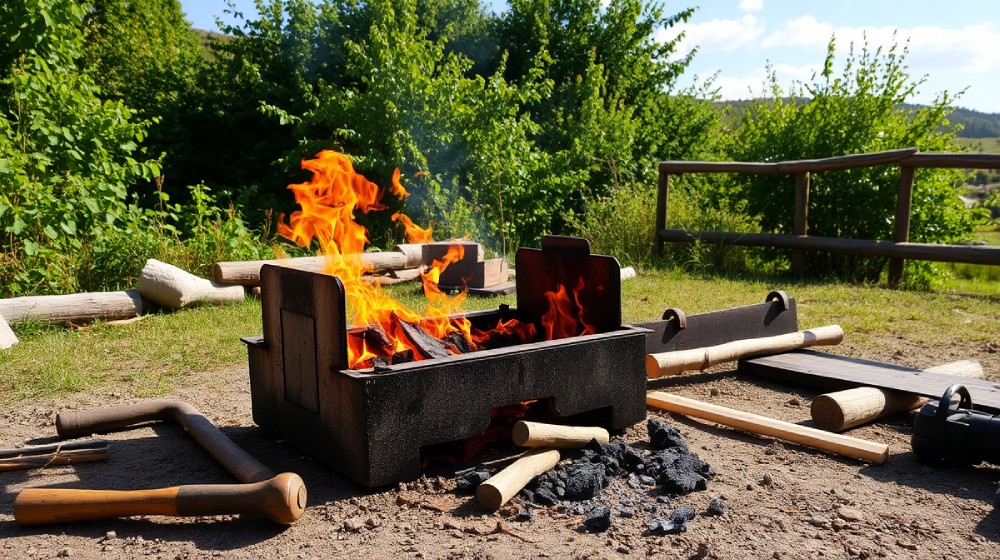
Kindling and Fire Starters
Creating a successful fire for your wood-burning grill starts with the right kindling and fire starters. Choosing the right materials makes all the difference in establishing a quick and efficient flame. Here are some effective options to take into account:
- Dry Kindling: Use small, dry wood pieces that ignite easily. They’re vital for kickstarting your fire.
- Natural Fire Starters: Enhance ignition with items like dryer lint or wax-covered cardboard. These options avoid harmful chemical accelerants.
- Teepee or Log Cabin Formation: Arrange larger logs around your kindling in a teepee or log cabin style to promote airflow, which is key for sustaining heat.
- Monitor and Adjust: Keep a close eye on the fire as the kindling burns down, creating hot coals in about 15-30 minutes. Adjust the positioning of wood pieces to optimize airflow and prevent smoldering.
Log Arrangement Strategies
Once you’ve established a solid foundation with kindling and fire starters, the next step is to focus on log arrangement. Start by using a teepee or log cabin structure for your smaller twigs and kindling. This setup encourages proper airflow, which is essential for ignition.
Once your fire is roaring, gradually add larger logs in a staggered pattern. This not only maintains an efficient burn but also helps create a sustainable hot coal base for cooking.
Consider utilizing the “log cabin” method, stacking logs in alternating layers. This arrangement optimizes airflow and heat distribution, guaranteeing your fire remains strong.
For longer cooking sessions, incrementally add seasoned, dry logs as needed. This keeps the heat consistent without the risk of smoldering. Don’t forget to monitor your log arrangement regularly.
Temperature Monitoring Techniques
To guarantee your wood burning grill reaches the perfect cooking temperature, it’s crucial to implement effective temperature monitoring techniques.
Accurate temperature control guarantees your food cooks evenly and achieves that delicious charred flavor.
Here are some practical methods to monitor your grill’s temperature:
- Observe Flame Color: Look for steady blue flames, which indicate ideal combustion and heat generation.
- Use a Heat-Resistant Thermometer: Place a thermometer near the cooking surface for precise temperature readings—this gives you reliable data for perfect cooking control.
- Try the Hand Test: Hold your hand about 6 inches above the grill grate. If you can keep it there for 3 seconds, you have high heat; if you can hold it for 5 seconds, that’s medium heat.
- Adjust Airflow: Manipulate the grill vents to control the fire’s intensity. Opening them increases airflow and heat, while closing them reduces it, allowing for better temperature management.
Grilling Methods and Techniques
Grilling is all about mastering various methods and techniques that can elevate your outdoor cooking experience.
Start with direct grilling, where you place your food right over the flame. This method cooks quickly and gives meats and vegetables a delicious charred exterior.
For larger cuts that need more time, try indirect grilling. Here, heat surrounds the food, ensuring even cooking without burning.
Searing is another fantastic technique. By cooking food at high temperatures, you create a caramelized crust that enhances flavor and locks in moisture.
If you’re preparing poultry or roasts, consider rotisserie grilling. This method rotates the food over a heat source, allowing it to cook evenly while self-basting for extra juiciness.
Don’t forget about smoking! This technique infuses food with rich, smoky aromas by cooking it with wood smoke at lower temperatures for longer periods.
Safety Precautions While Grilling
When you set up your wood-burning grill, make sure it’s on a stable, non-flammable surface to avoid any accidents.
Keep it away from flammable materials, and always have a fire extinguishing plan in place.
Stable Grill Placement
A stable and secure grill placement is essential for a safe grilling experience. When you’re ready to fire up your wood-burning grill, keep these important points in mind to guarantee safety and efficiency:
- Flat Surface: Always place your grill on a stable, flat surface to prevent tipping and spills during use.
- Avoid Overhangs: Keep your grill away from overhanging branches, awnings, and flammable structures. This minimizes fire hazards and protects your surroundings.
- Use Non-Flammable Materials: For your grill base, opt for non-flammable materials like concrete or brick. This reduces the risk of fire spreading in case of an accident.
- Maintain Safe Distances: Confirm your grill is at a safe distance from other flammable items such as propane tanks, firewood, and outdoor furniture.
Additionally, regularly inspect the grilling area for debris and flammable items to maintain a clear and safe environment.
Fire Extinguishing Techniques
Even with a stable grill placement, the risk of fire remains a concern during outdoor cooking. To guarantee your safety, always keep a fire extinguisher rated for grease and wood fires close by. This allows you to quickly address any flare-ups or uncontrolled flames.
Additionally, have a bucket of sand or a garden hose with a spray nozzle ready. Avoid using water, as it can cause hot grease to splatter, making the situation worse. Always place your grill on a stable, non-flammable surface, and maintain a safe distance from flammable materials like paper, wood, or fabric.
Never leave your grill unattended while it’s in use. Keep a close eye on the temperature to mitigate the risk of flare-ups or hazardous situations.
Once you’ve finished grilling, allow the ashes and coals to cool completely. Dispose of them safely in a metal container with a lid to prevent rekindling.
Enhancing Flavor With Wood
Wood plays an essential role in enhancing the flavor of grilled foods, transforming your cooking experience into a culinary adventure. Choosing the right type of wood is vital for achieving the perfect smoky flavor. Here are some tips to get you started:
- Select Your Wood: Use hardwoods like oak, hickory, or mesquite for a rich, smoky aroma. For a sweeter touch, consider cherry wood, while pecan wood offers a milder, nutty flavor.
- Season Your Wood: Opt for seasoned wood with lower moisture content. It burns hotter and cleaner, which not only improves flavor but also reduces creosote buildup.
- Add Wood Chips: Incorporate wood chips or chunks directly onto the fire. Soak the chips in water for about 30 minutes beforehand to prolong their smoking effect, intensifying the flavor of your food.
- Maintain a High Draft: Utilize a high draft system in your grill. This helps keep a consistent flame and prevents smoldering, ensuring ideal flavor release throughout the cooking process.
Frequently Asked Questions
What Is the Best Wood for a Wood Fire Grill?
For the best wood fire grill experience, use hardwoods like oak or hickory for heat and flavor. You can mix in fruit woods like cherry for a sweeter smoke, but avoid softwoods due to undesirable flavors.
How to Make a Wood Fire Barbecue?
To make a wood fire barbecue, choose a safe location, build a sturdy fire pit, and light kindling with larger wood. Wait for hot coals, then adjust the grill height for perfect cooking. Enjoy!
Can You Build a Grill With Wood?
Absolutely, you can build a grill with wood! Picture luscious flames dancing, infusing your food with smoky flavors. By choosing the right materials and design, you’ll create a cooking experience that’s both enjoyable and delicious.
Can I Use Any Wood for Grilling?
You can’t use just any wood for grilling. Stick to hardwoods like oak or hickory for flavor and heat. Avoid softwoods and treated wood to keep your food safe and taste great.
Build Your Own Wood-Burning Grill: Embrace Tradition and Flavor
Building your own wood-burning grill not only brings a unique flavor to your meals but also connects you with a time-honored tradition. Did you know that over 70% of grill enthusiasts prefer the smoky taste of wood-fired cooking?
Taking the time to build your grill connects you with a community that treasures craftsmanship and exceptional outdoor cooking experiences. So go ahead, spark up those flames, and enjoy the mouthwatering rewards of your hard work.

